By Joanne Ross
One of the beauties of META-Health is that it gives us a richer and deeper understanding of life and lives: what’s happening with ourselves and others and WHY.
Watching movies, especially biopics, through the lens of META-Health gives us greater insights and deeper perspectives on the key themes, patterns and causes.
I recently watched Wild, which portrays the story of young American woman Cheryl Strayed as she undertakes an 1100-mile solo trek along the Pacific Crest Highway. The film is based on her best-selling memoir, and watching the film through a META-perspective revealed a lot about the underlying themes. I’d like to share these with you.
The DVD is available from 25 May. If you intend to see the film, you may want to save this article and read it afterwards!
The Journey as a Metaphor
Cheryl embarked on her gruelling thousand-mile hike as means of coming to terms with herself: a way of purging her inner demons, cleansing her life, and, as tells us, reconnecting with ‘the woman her mother had raised her to be’.
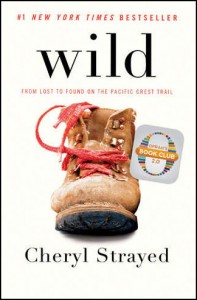 Why? Her life had hit her rock bottom, with her recent history including heroin and sex addiction, grief over the loss of her mother, divorce, and an unwanted pregnancy, which was ‘the straw that broke the camel’s back’, the final event that told her something (she) had to change.
Why? Her life had hit her rock bottom, with her recent history including heroin and sex addiction, grief over the loss of her mother, divorce, and an unwanted pregnancy, which was ‘the straw that broke the camel’s back’, the final event that told her something (she) had to change.
Often we start such journeys, literal and metaphorical, in a bid to escape from the person we’ve become, only to find that we’ve taken ourselves along with us! Then the journey becomes one of healing and accepting ourselves.
Wild follows Cheryl’s inner and outer story as she faces and conquers her pain, and reveals how she achieved a measure of resolution.
Guilt and Self Punishment
One of the key themes throughout Cheryl’s story is self-blame. This shows up in different aspects of the narrative:
1. Name Change
First, after getting divorced, she changed her surname to ‘Strayed’, meaning ‘gone wild’ in a negative sense. This is a statement of behaviour not identity! As NLP reminds us, we can accept the person if we separate their intention and being from their behaviour – yet here the protagonist chose to merge her identity with the behaviour she blamed herself for.
2. Meaningful Tattoo
A second sign of her guilt was getting a tattoo of a horse. This showed a dual layer of guilt: first, both she and her ex-husband had the same tattoo as a way of binding themselves together.
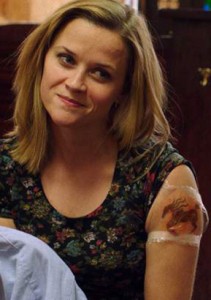 Flashbacks of Cheryl taking heroin, having sex with strangers and arguing with her husband indicate her self-blame for their break up.
Flashbacks of Cheryl taking heroin, having sex with strangers and arguing with her husband indicate her self-blame for their break up.
Even more importantly, the horse represented her mother’s pet. Her mother entrusted the horse to Cheryl when she died and told Cheryl to choose kindly. We discover through flashbacks that Cheryl had the horse shot when it became ill, and experienced considerable internal turmoil about this decision.
We know from META-Health that the dermis (the under layer of skin which is penetrated by the tattooist’s needle) represents a feeling of being deformed, defiled or uglied and questioning one’s integrity, which all connect with these experiences.
3. The Hike
We could also see the trek itself as a form of punishment, as well as a method for purging and catharsis. On a physical level, the continuous hiking results in the loss of toenails and sores all over her body. Socially, she is isolated and vulnerable, and mentally, this aloneness brings up her unresolved issues.
(Not) Dealing with Grief
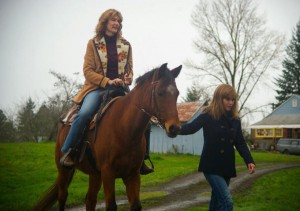 The main theme Cheryl contends with is grief over the loss of her mother Bobbi.
The main theme Cheryl contends with is grief over the loss of her mother Bobbi.
Through flashbacks, we see her shock and disbelief at the time of her mother’s diagnosis and death, and the sense of injustice around losing her. Her descent into drug and sex addition is a way of attempting to deal with the grief as it serves to numb the pain.
Through META-Health, we see that this reaction and behaviour is linked to a post-mortal and nymphomanic constellation. This constellation connects the relays of the coronary arteries and veins, cervix and heart rhythm centre.
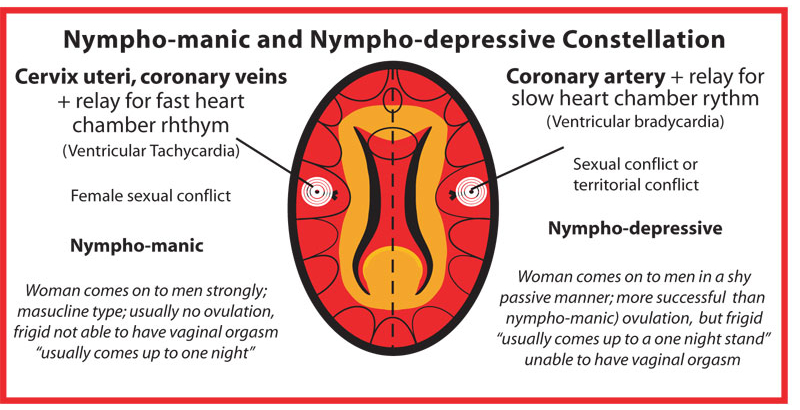
Following the shocking death and separation from her beloved mother, who she refers to as ‘the love of her life’, Cheryl begins to have detached sex with strangers. But, as she tells a therapist, she doesn’t have sex with her husband: she can’t experience a loving connection. This is a reaction but not a solution: the pain is temporarily numbed but remains.
Family Patterns
The story of Cheryl’s mother’s illness and death, as told through Cheryl’s memories, can also be seen from a META-Health perspective. Bobbi was diagnosed with lung cancer and spinal tumours. While the film doesn’t show what may have led to lung cancer, earlier SEEs (significant emotional events) around her violent ex-husband are shown, and the themes around the spine are also evident.
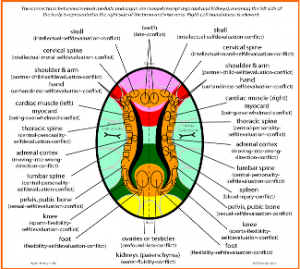 META-Health reveals that spinal issues are connected to themes of self-devaluation, deep feelings of inferiority, the felt inability to support oneself and the burden of having to support others.
META-Health reveals that spinal issues are connected to themes of self-devaluation, deep feelings of inferiority, the felt inability to support oneself and the burden of having to support others.
All of these themes can be perceived through the story, with Bobbi’s marriage to an abusive man, her financial difficulties after leaving him, and her torn perception of herself as ‘only’ a mother.
In one scene, mother and daughter discuss Bobbi’s sadness that her daughter is more ‘sophisticated’ than her, but at the same time, how she wanted and intended this. Bobbi starts attending the same university as her daughter, and, while this brought internal conflict with her mothering role, it’s possible that it may also have brought some resolution to her self-devaluation.
Moving Towards Resolution
As we follow Cheryl’s physical journey north along the Pacific coast, we also follow her inner journey through her nightmares and memories as she steadily comes to terms with herself and her experiences.

1. Releasing Guilt
Towards the end of the hike, we see changes emerging. Cheryl writes her husband’s name in the sand for the last time, able to hold love in her heart for him without feeling beholden by guilt.
2. Awareness
She has a realisation that perhaps she doesn’t need redemption – that she was already redeemed and that all the events leading to this point may have been necessary to get her here.
3. Catharsis
 A poignant scene shows Cheryl meeting a ‘troubled’ little boy and his grandmother. The boy sings to her, which causes her to finally collapse and sob. This is what she needed all along – deep emotional release and resolution.
A poignant scene shows Cheryl meeting a ‘troubled’ little boy and his grandmother. The boy sings to her, which causes her to finally collapse and sob. This is what she needed all along – deep emotional release and resolution.
After this turnaround, she reaches ‘The Bridge of the Gods’, the symbolic end to her journey, and tells us that after this point, her life moves forwards as she settles in the Pacific Northwest, meets her future husband and becomes a mother to two children.
The Inner Work
For me, the story of this journey very much reflects the personal development work we do with ourselves, each other and clients: identifying our core inner conflicts, working through them, releasing the painful emotions associated with past events and self-destructive beliefs, and enabling ourselves to come more fully into our true selves and our lives.
More Movies Through META-Health
As META-Health enriches our understanding of films, films can enhance our understanding of META-Health!
On our META-Health Foundation course, we show part of the film Ray, which tells the life story of legendary jazz musician Ray Charles and why he lost his sight.
On last year’s META-Health Practitioner course, we had movie nights showing The King’s Speech and The Matrix and discussing the META-perspectives behind each of these stories.
Your Views
If you’d like to comment on this article, share part of your own healing journey, or have further insights about Wild or other movies from a META-Perspective, please comment on our Facebook page or leave a comment below.
Work with us for personal coaching and therapy, or join our training courses, or email us for more information.





2 Comments
Roni Flatley
29/05/2015Can’t wait to watch it now!! Fabulous article as always. May be useful to explain SEE in future articles rather than the initials, so it can be understood by people not familiar with META-Health
my underarms are Dark
13/11/2015Howdy I am so happy I found yor blg page, I really found you by accident,
while I was loking on Bing for something else, Anyways I
am here now and would just like to say thanks for a tremendous post andd
a all round entertaining blog (I alo love the theme/design), I don’t have
time tto read through it aall aat the minute buut I ave
bookmarked iit and also added in your RSS feeds, so when I have
time I will be back to read much more, Please doo keep up
the fantastic b.
Leave A Response